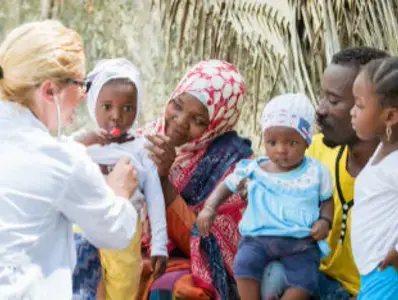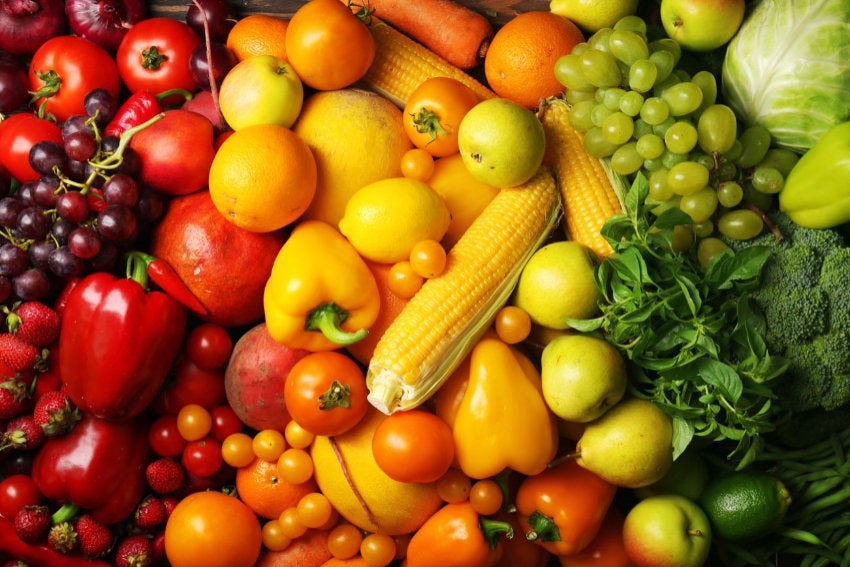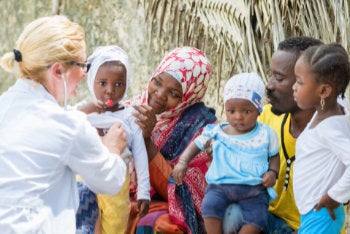World AIDS Day: Boosting & maintaining immunity


As we acknowledge World AIDS Day, we examine the immune-boosting methodologies well-suited to the East and Southern Africa Region (ESAR).
The global context:
- Sub-Saharan Africa is home to two thirds (67%) of people living with HIV 2
- Those with HIV experience more severe outcomes & have higher comorbidities from COVID-19 than those who do not have HIV 2
-
- In mid-2021, most people living with HIV did not have access to COVID-19 vaccines 2
-
- Studies from South Africa found that the risk of dying from COVID-19 among people with HIV was double that of the general population 2
-
- However, the COVID-19 vaccines that can protect them are not arriving fast enough 2
-
- In July 2021, less than 3% of people in Africa had received at least one dose of a COVID-19 vaccine 2
- In 2020, 1.5 million people became newly infected with HIV 2
-
- In the same year, 680 000 people died from AIDS-related illnesses 2
- Women and girls accounted for 50% of all new infections in 2020 2
Facing undernutrition & HIV infection in SSA
 Sub-Saharan Africa (SSA) is excessively burdened by both food insecurity and HIV infection.3 In this region, protein-energy undernutrition is regularly seen in people living with HIV (PLHIV) starting antiretroviral therapy.3
Sub-Saharan Africa (SSA) is excessively burdened by both food insecurity and HIV infection.3 In this region, protein-energy undernutrition is regularly seen in people living with HIV (PLHIV) starting antiretroviral therapy.3
A low body mass index (BMI) has been correlated with reduced immune recovery and increased mortality during the early antiretroviral therapy period.3 Such mortality risk is multifactorial, where converging contributors include undernutrition-related immune system dysfunction, increased susceptibility to opportunistic infections and metabolic and cardiovascular dysregulation. 3
However, many studies have shown that micro/macronutrient supplementary feeding, appetite stimulants (hormones and anabolic agents) and recombinant adipokines improve weight gain (increasing BIM) as well as metabolic health.3
With this in mind, one method that Healthcare Practitioners (HCPs) can recommend to PLHIV is micro/macronutrient supplementary feeding, in the form of fortified foods. This method would work best in SSA, when compared to appetite stimulants and recombinant adipokines, as fortified foods are more commonly available and accessible in the region.
Improving the immune functionality of the gut in PLHIV
Nutrition and food choices directly affect the composition of the gut microbiota, which, consequently, influences immune homeostasis. 1 This means that dietary factors and the gut have a direct route to the assembly of the immune system.1
Studies have determined specific nutrients essential to the overall functioning of the immune system. 1
 Nutrients necessary for optimal immunity functioning:1
Nutrients necessary for optimal immunity functioning:1
- Vitamin A
- Beta-carotene
- Vitamin B9 (folic acid)
- Vitamin B6
- Vitamin B12
- Vitamin C
- Vitamin E
- Riboflavin
- Iron
- Zinc
- Selenium
HCPs can recommend the above supplements, when available, to PLHIV. Read more about utilising supplements in Africa with the article: “When & how do supplements best support African populations?”
Unfortunately, supplements can often be expensive and inaccessible in some African regions, which is why a greater variety of food and increased consumption of fruits and vegetables are ideal to increase nutrient intake.
Find more research on increasing nutrient intake through the use of community gardens, in a previous article from Nestlé Nutrition Institute Africa (NNIA): “Are community gardens, urban and home farms the key to improved nutrition?”
Avoiding post-natal anaemia & iron deficiency in HIV-infected women
 Prenatal iron supplementation has been shown to improve pregnancy outcomes while decreasing the risk of child mortality.4 However, the importance of post-natal maternal iron status for child health and survival, particularly in the context of HIV infection, is studied to a lesser extent.4
Prenatal iron supplementation has been shown to improve pregnancy outcomes while decreasing the risk of child mortality.4 However, the importance of post-natal maternal iron status for child health and survival, particularly in the context of HIV infection, is studied to a lesser extent.4
In a 2012 study on this topic, maternal anaemia was not significantly associated with greater risk of child HIV infection, yet did predict lower CD4 T-cell counts, even in HIV-uninfected children. This indicated that potential child health risks, which are associated with maternal anaemia and iron deficiency, may not be limited to the prenatal period.4 In turn, efforts to reduce maternal anaemia and iron deficiency should be expanded into the post-partum period.4
To do this, HCPs can recommend the use of iron supplements, not only during the prenatal period, but in the post-partum period, too. Doing so may boost mother and child immunity, limiting the impact of HIV infection.
The use of medicinal plants
PLHIV in Uganda have been shown to make wide use of medicinal plants to boost immunity and manage infections.5 This has created a demand for traditional immunity- and overall health-boosting medicines.6
In the 2020 study, several plant species are used by herbalists to boost immunity in PLHIV, and data on such species can be beneficial to other researchers and policy makers. 5 Species data can be useful in understanding both the use patterns, the dynamics of herbal medicines, as well as the use of antiretroviral drugs among PLHIV.5
This study delivered a basis for further investigation of plant species as potential drug options in moderating the immune system in immunocompromised individuals.5
Conclusion
There are a number of immunity-boosting methodologies employed in the management of HIV/AIDS in ESAR. HCPs can recommend the best-suited interventions, according to their patient’s specific circumstances.
However, the easiest way to improve immunity would be through appropriate nutrition education, improving food security and increasing the consumption of fruit and vegetables with increased variety / diet diversity.
References:
- Mahmoudi, M. and Rezaei, N., 2019. Nutrition and Immunity. Cham: Springer International Publishing.
- UNAIDS.org. 2021. Global HIV & AIDS statistics — Fact sheet. [online] Available at: <https://www.unaids.org/en/resources/fact-sheet> [Accessed 23 November 2021].
- Fuseini, H., Gyan, B., Kyei, G., Heimburger, D. and Koethe, J., 2021. Undernutrition and HIV Infection in Sub-Saharan Africa: Health Outcomes and Therapeutic Interventions. Current HIV/AIDS Reports, 18(2), pp.87-97.
- Isanaka, S., Spiegelman, D., Aboud, S., Manji, K., Msamanga, G., Willet, W., Duggan, C. and Fawzi, W., 2012. Post-natal anaemia and iron deficiency in HIV-infected women and the health and survival of their children. Maternal & Child Nutrition, 8(3), pp.287-298.
- Anywar, G., Kakudidi, E., Byamukama, R., Mukonzo, J., Schubert, A. and Oryem-Origa, H., 2020. Medicinal plants used by traditional medicine practitioners to boost the immune system in people living with HIV/AIDS in Uganda. European Journal of Integrative Medicine, 35, p.101011.
- Davids, D., Blouws, T., Aboyade, O., Gibson, D., De Jong, J., Van’t Klooster, C. and Hughes, G., 2014. Traditional health practitioners’ perceptions, herbal treatment and management of HIV and related opportunistic infections. Journal of Ethnobiology and Ethnomedicine, 10(1).
If you liked this post you may also like




A recap on NNIA’s Functional Gastrointestinal Disorders
